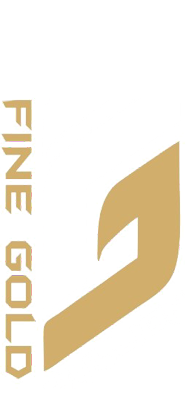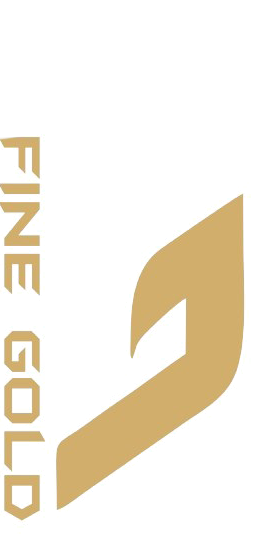
Why Gold Markings Aren’t Always Reliable for Verifying Purity?
Did you know a recent buyer paid full price for a chain marked “24K”—only to learn later it wasn’t pure gold at all? Gold markings like 24K, 916, and 750 are often visible as guarantees of quality. Most people trust them without a second thought. But is that trust always earned? While these marks provide a basic idea of purity, they are not always accurate, and they can be faked. This post takes a closer look at why gold markings aren’t always reliable. If you are buying gold, knowing how to verify its purity can protect you from costly mistakes.
Understanding Why Gold Markings Aren’t Always Reliable
Gold markings are small stamps available on gold bars or coins that tell you about their purity and origin. The most common system used is the karat system. For example, 24K means pure gold, while 22K and 18K contain a mix of gold and other metals. You’ll also see hallmarks and stamps such as “BIS” in India or “999” for 24K gold. These markings are not just symbols—they’re there to help. They let buyers know exactly what they’re getting, making it easier to compare value. More importantly, they help regulate the gold trade and build trust between sellers and customers. Always check for these marks to ensure you’re making a genuine and safe purchase.
Insights on Common Weaknesses of Gold Markings
Not All Markings Are Regulated or Standardized
Gold markings are not reliable, especially in countries that do not observe strict regulations. There are also areas where unverified stamps are acceptable, and this makes it easy to circulate fake marks or marks which are not accurate. Such a problem is even more widespread in the informal markets. International standards are non-existent, and hence, a gold mark in one country does not qualify. This puts buyers in an awkward position.
Markings Can Be Faked or Tampered With
Sadly, most of the fake gold marks may be in even a very pricey-looking piece. Sellers can lie from you where they stamp items with 24K or other values which can the buyers. These writings are formal yet have no weight. A professional examination is the only option to understand if the item you are buying is entirely pure or not.
Wear and Tear Can Obscure Markings
Gold may also fade with time, which makes the stamp difficult to read. Denting or scratches can erase or diminish the marks. Second-hand items also have very unclear markings. This will create false impressions in the buyer regarding the gold quality. That is why, without inspection, it can be dangerous to use markings on them, particularly with used things.
Discussing Reliable Ways to Verify Gold Purity
We have already discussed in detail why gold markings aren’t always reliable. For your assistance, we will explain a few more essential methods with which verifying gold bullion Canada purity is possible:
Professional Assaying
A classical and reliable way of testing the purity of gold is by professional assaying. It is performed in special laboratories that have expert techniques and equipment. Assayers follow strict procedures to identify the precise composition of gold in a sample. It is a very reliable process and is mainly used in the bulk verification of gold when it comes to trade, banks and significant transactions.
Acid Tests (For Small Pieces)
The acid test is a simple and cheap test of the purity of items of small gold. A little scratch is scribed on a testing stone, and various acids are applied. The reaction also shows the level of karats. Although it’s not as precise as other methods, it is still very common among small pieces and gold buyers for regular checks.
Hallmark Authentication with QR Codes or Blockchain
The hallmarking process has been augmented with QR codes and blockchain entries to certify the source and purity of gold. Being based on modern technologies, this information cannot be edited. As a result, the tracking is transparent and secure. The consumer can scan a code to see the information regarding the gold karat, weights and origin. This new development is shaking up trust and trade in gold.
Buy from Certified Dealers Only
Always from buy gold Canada from certified dealers and get all the documentation, such as a general certificate and test certificates of purity, and a buy-back guarantee. Such corporations comply with quality regulations that are frequently audited. Since the gold is certified, it is authentic, traceable, and fairly priced. Not buying products from uncertified sellers will save you from fraud and protect the value of your investment in the long run.
FAQs: Common Questions People Often Ask
1. Do 24K or 916 gold karats must be marked legally?
Not always! Some countries require strict laws on hallmarking (such as BIS in India or LBMA standards in other countries). In other regions, no regulation or control is in force.
2. Are there fake hallmark and karat marks on gold?
In unregulated markets or tourist markets, counterfeit stamps are common. The buyer may be fooled by fake sellers who can add false markings to the low-purity or gold-plated items.
3. How can I verify the purity of gold?
Fire assay is the most accurate, yet it is destructive. In non-destructive testing, the most widely trusted is XRF (X-ray fluorescence). There are also acid tests and digital gold testers used to ensure accurate results in small items.
4. Is 24 K pure gold?
Not exactly! In technical terms, 24K gold is supposed to be purer than 24 parts in a hundred. It is proficient enough to be described as 99.9% pure (referred to as 999 too). But as pure 24K may contain a small portion of impurities.
Ready to Own Gold You Can Trust? Visit Us Now!
Skip the guesswork, choose certified, assay-tested fine gold bullion from reputable, LBMA-accredited sources. Our gold bars come sealed, certified, and guaranteed for purity. Whether you’re a first-time investor or a seasoned gold enthusiast, peace of mind is only a click away with Fine Gold Bullion. Buy smart, buy pure. Buy gold that’s worth its weight.

